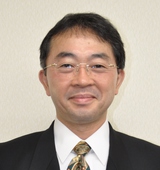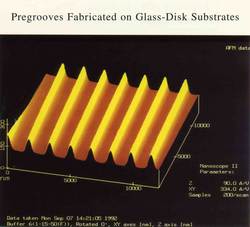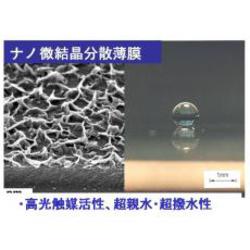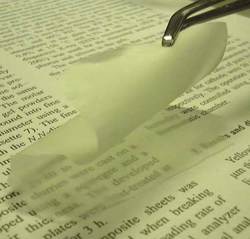
Matsuda, Atsunori
| Affiliation | Department of Electrical and Electronic Information Engineering |
|---|---|
| Title | Professor |
| Fields of Research | Inorganic Materials Science |
| Degree | Dr of Engineering |
| Academic Societies | The Chemical Society of Japan / The Ceramic Society of Japan / The Electrochemical Society of Japan / The Solid State Ionics Society of Japan / The Japanese Sol-Gel Society / International Sol-Gel Society / Catalyst Society of Japan / Society for Discr |
| matsuda@ee Please append ".tut.ac.jp" to the end of the address above. |
|
| Laboratory website URL | http://ion.ee.tut.ac.jp/ |
| Researcher information URL(researchmap) | Researcher information |
Research
Development of advanced materials using sol-gel method, mechanical milling, layer-by-layer assembly, electrophoretic deposition, and anodization.
1. Micro-patterning using inorganic-organic hybrid films
2. Transparent titania crystalline films by hot-water-treatment
3. Control of wettability and super-hydrophobicity and super-hydrophilicity
4. Functional thick films by electrophoretic deposition
5. Proton conductive solid materials for ionic devices
6. Functional materials by mechanochemical synthesis
7. Core/shell and hollow particles by layer-by-layer assembly
8. Solid electrolytes for next generation fuel cells
9. Photo-responsive hybrid materials for hologram memory
10. Oxide nanotubes by anodization and photoelectric applications
11. Development of sulfide-type all-solid-state Li-ion batteries
Theme1:Micro/Nano Patterning Using Inorganic-Organic Hybrid Films
Overview
Gratings and microlens arrays for optical devices have been successfully fabricated by embossing technique using inorganic-organic hybrid films. Photosensitivity, optical and mechanical properties can be controlled by optimizing the type and concentration of the functional groups in the hybrid films.
Keywords
Theme2:Low Temperature Preparation of Titania Crystalline Films by Hot-Water-Treatment
Overview
We have found that anatase nanocrystals were formed in sol-gel-derived silica-titania films by hot-water-treatment at temperatures lower than 100oC under ambient pressure. The resultant nano-coatings showed excellent photocatalytic activity and superhydrophilicity.
Keywords
Theme3:Development of Solid Electrolytes for Next Generation Fuel Cells
Overview
We have developed several highly proton conductive materials by sol-gel, layer-by-layer, and mechanical milling. The proton conductive materials developed can be applied as electrolytes for the next generation fuel cells, which operate at medium temperatures without humidifying.
Keywords
Title of class
Lc-AM1. Spring Engineering General Remarks A.Matsuda et al. B1~
Lc-AM2. Fall Basic Inorganic Chemistry A.Matsuda Thu.3 B1~
Lc-AM3. Spring Inorganic Chemistry A.Matsuda Mon.2 B3~
Lc-AM4. Spring Electrochemistry A.Matsuda Tue.2 B4~
Lc-AM5. Spring Functional Materials for Optical Applications A.Matsuda Mon.3 M1~
Lc-AM6. Fall Materials for ELectronics A. Matsuda et al.M1~
Lc-AM7. Fall Advanced Materials for ELectronics II A. Matsuda et al. D1~
Lc-AM8. Spring Physics for Electronics A.Matsuda Wed.2 M1~2




